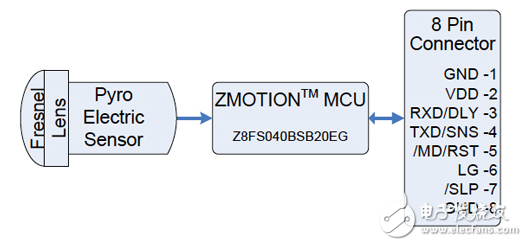
资料下载

遥感与被动红外运动传感器(PIR)
遥感与被动红外运动传感器(PIR)
被动红外(PIR)传感器测量红外光线从物体产生热发射红外辐射,因此,在它的视野。传感器表面矩形中心的晶体材料检测红外辐射。传感器实际上分成两半,以便探测到辐射本身,而不是当目标进入其场时所发生的情况的变化。这些元素上的红外辐射量的变化反过来改变了由板载放大器测量的电压。当检测到运动的PIR传感器输出的输出引脚的高信号,可以读取由单片机或驱动晶体管开关的高电流负载。
实际检测到的是“正常”温度的破断场。这个字段不需要被一个不同温度的物体破坏,以记录变化,因为高度敏感的传感器会单独从运动中激活。设计用于在15°C到20°C的环境温度下,在较高温度下视野变窄,如果低于15°C,视野变宽,小或远的物体可以激活传感器。因为这个原因,这是不推荐使用的传感器在通风良好的环境,在暖通空调设备,或面对窗户,外面的温度,甚至运动,会导致错误的读数。

Commonly used in security lighting and alarm systems in an indoor environment, PIR sensors have a range of approximately 6 meters, depending on conditions. The sensor adjusts to slowly changing conditions that occur normally within the environment, but shows a high-output response when a sudden change takes place.
Generally speaking, PIR sensors are small, inexpensive, low power, rugged, have a wide lens range, are easy to interface with, and are easy to use. Their best feature is that they don’t wear out. While they may be easy to use, they are also fairly complex, since many variables that can change the sensor’s input and output must be considered.
声明:本文内容及配图由入驻作者撰写或者入驻合作网站授权转载。文章观点仅代表作者本人,不代表电子发烧友网立场。文章及其配图仅供工程师学习之用,如有内容侵权或者其他违规问题,请联系本站处理。 举报投诉
- 相关下载
- 相关文章








